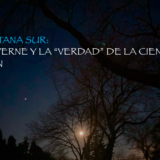2013 sees the twentieth anniversary of Jurassic Park. To celebrate, a 3D version will be released in the USA in April: https://www.jurassicpark.com/index_splash.html.
Dinosaurs are hotter than ever before and that’s good news. Their snapping jaws and tail-smashing antics on the big screen will help new palaeontology ideas to filter down to the general public. Before Jurassic Park, velociraptors were pretty much unknown, but now they are one of the most famous of all dinosaurs. The same sudden explosion into the spotlight happened for the spinosaurus. Once languishing in the shade of T. Rex, the spinosaurus’s star turn in Jurassic Park III catapulted it into the A-List of terrible lizards, with a silhouette as recognisable as that of Indiana Jones.
Some palaeontologists may despair of the movie portrayal of their specialist subject. One gripe focuses on fictional discoveries of near complete skeleton fossils, laid out in the sand. In real life, only a single jawbone might be found, or a few scattered vertebrae. Many fossils aren’t even found in exotic locations like the US desert. Paleontologists are as likely to be grubbing around in the rain and mud in Southern England: https://www.jurassicpark.com/index_splash.html.
Nevertheless, Jurassic Park gave a huge boost to public interest and understanding of fossils, and the makers of the series kept up with modern developments. For many people, their first inkling that dinosaurs had feathers would have been their appearance on some of the velociraptors in the third movie.
Whether these or other dinosaur depictions are entirely accurate is open to debate. Short of a quantum leap in our ability to extract and analyze dinosaur DNA, we will never really know what they looked like. This has prompted a new and exciting book, All Yesterdays : Unique and Speculative Views of Dinosaurs and Other Prehistoric Animals by Darren Naish, C. M Kosemen and John Conway.
These authors have effectively reverse-engineered the skeletons of existing species to show how they might be re-imagined in the hands of a paleoartist. The results are extraordinary. As well as showing how a cat or a baboon might be depicted in the hands of a dinosaur expert, they also question the poses that are used to show dinosaur behaviour. They argue that your average T.Rex spent most of its time curled up asleep, rather than chasing across a wasteland and biting chunks out of a triceratops: https://io9.com/5965389/a-book-that-will-make-you-question-everything-you-know-about-dinosaurs.
From the point of view of the SF writer or fan, our growing knowledge of dinosaurs is something that keeps the subject fresh as a source of ideas. Following the 3D rerelease of Jurassic Park, the whole franchise will be re-launched with Jurassic Park IV in 2014. Then it will be really exciting to see what monsters from the past will be on hand to chew up the scenery.










